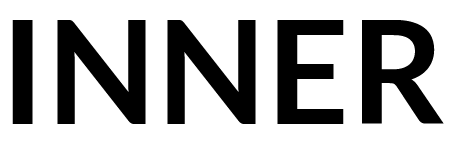By Cory Jones | President, Gulf Cabinets of Florida
SEO Elements
- SEO Title: Why Hand Sketches Still Matter in Custom Cabinetry
- Meta Description: In a CAD-dominated world, discover why Gulf Cabinets still starts with pencil and paper — and how hand sketches create better results.
- Focus Keyword: hand sketch cabinetry
- Supporting Keywords: custom cabinet design, cabinet rendering, CAD vs hand sketch, design process, cabinetry workflow
- URL Slug: /why-hand-sketches-still-matter
- Internal Links:
- External Link: Architectural Digest – Sketching in Modern Design
Introduction
We live in a digital design world. Clients expect 3D renderings. Builders want millimeter-perfect shop drawings. And of course — at Gulf Cabinets, we use CAD every day to draft, plan, and communicate.
But before any of that begins, I still reach for a pencil.
There’s something about a hand sketch that no software can replicate. It’s faster. It’s more personal. And believe it or not — it often saves us time, confusion, and errors down the line.
Here’s why we still sketch by hand, even when we don’t have to.
The Sketch Is a Language, Not a Step
When I meet with a homeowner or designer, they often have ideas in their head that are hard to describe. “I want it clean but not modern.” “Something open, but not too open.” “Can we do shelves here… maybe?”
Words get lost. But if I sit across from them, flip over a piece of paper, and start drawing, something happens.
They lean in. They point. They nod.
We’re now speaking the same language.
Hand sketching doesn’t just show what I’m thinking — it invites them into the process.
Faster Clarity, Fewer Missteps
Digital drawings are accurate — but slow. By the time you open your CAD program, set up templates, align layers, and render views… the client’s already confused or second-guessing.
Hand sketches offer real-time clarity.
Let’s say a client wants a pull-out pantry but isn’t sure how it will affect the counter flow. I can sketch it right there — in five seconds. That sketch lets us solve it, shift it, or scrap it on the spot.
That’s hours saved. Mistakes avoided. Trust built.
Visual Thinking = Better Builds
The best installers I know are visual thinkers. They don’t just read measurements — they picture the space. They imagine how the cabinet will open, what it will hit, how it will feel.
When I give my team a hand sketch, they immediately understand the flow. There’s no ambiguity about intention. They can see my thought process, not just the outcome.
It’s not about perfection — it’s about vision. A sketch captures decisions, priorities, and constraints that a dimensioned plan alone can’t.
Where CAD Still Shines
Make no mistake: we’re not anti-technology. CAD is essential — especially for:
- Detailed shop drawings
- Permitting and approvals
- Large-scale multi-unit builds
- CNC optimization
- Sharing specs across teams
But here’s the truth: CAD is a destination, not a starting point.
A sketch is a spark. CAD is the structure. If we jump straight to CAD, we often miss the most creative part of the process.
Clients Feel More Involved
You can hand someone a rendering and ask, “Do you like this?” They’ll either say yes or no — and feel slightly unsure about both.
But when you sketch in front of them and ask, “What if we move this here instead?” they feel part of the design.
That confidence means fewer change orders, faster approvals, and better word-of-mouth referrals.
People don’t just remember the cabinets. They remember the conversation that led to them.
When We Don’t Sketch
There are times we skip sketching — especially if we’re doing a straight cabinet replacement, working from an architect’s drawings, or replicating a builder-grade layout.
In those cases, jumping straight to CAD makes sense. It’s all about context.
But for custom builds, first-time homeowners, or complex space planning, a hand sketch is still the best tool we’ve got.
It’s Not Old School — It’s Just Good Process
Sometimes people call hand sketching “old school.” I call it “complete.”
It’s not about nostalgia. It’s about clarity.
A quick pencil drawing cuts through noise, uncovers blind spots, and builds rapport in ways software can’t match.
If you’re in the cabinetry industry — or any design trade — don’t lose that tool. Don’t wait for a 3D render to fix a 2D misunderstanding.
Final Thought
The best designs don’t always start on screens.
At Gulf Cabinets, we use both — the pencil and the processor. We sketch by hand to listen better, plan smarter, and deliver builds that fit not just the space, but the people living in it.
You don’t need to be an artist. You just need to be present. Because when your client sees you drawing their idea in real time, they see more than a cabinetmaker.
They see a partner.
Sora Video Prompt (for this blog)
Prompt:
A hyperrealistic vertical flash photograph shot in 1080×1350 format, captured with direct flash and sculptural shadows. The subject is a craftsman sitting at a wooden desk in a quiet workshop, sketching cabinetry plans with a pencil on vellum paper. His sleeves are rolled up. The environment includes scattered tools, a coffee mug, and measuring tape. The camera angle is diagonal, focused on the sketchpad. Visual tone is editorial, tactile, and authentic.


